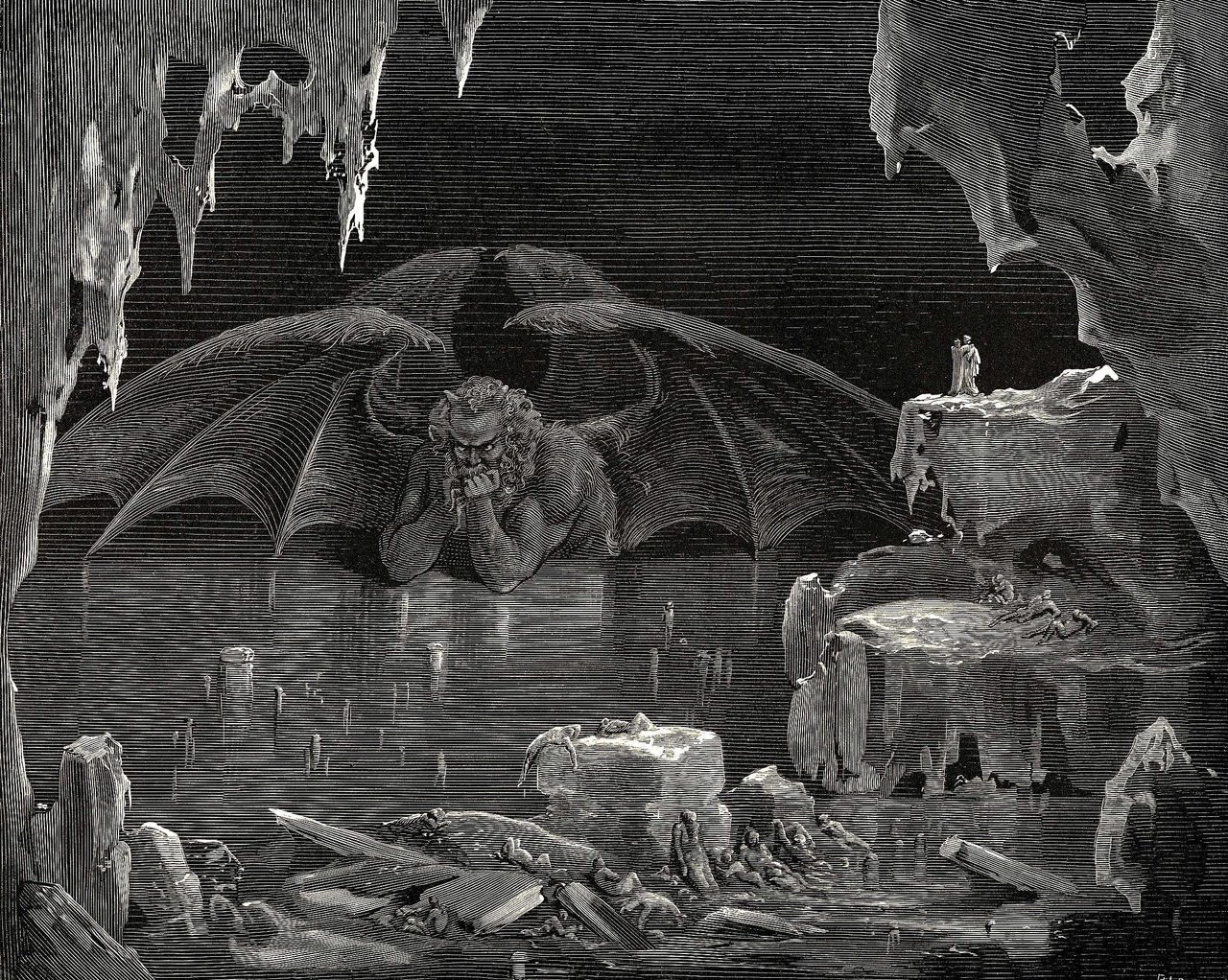― John Milton, Paradise Lost
The last of the 'Classic Monsters' is one we are all familiar with. Originating from the texts of Abrahamic religions (Judaism, Christianity, Islam and their respective derivatives), the Devil is the personification of evil, the ruler of Hell and the mortal enemy of God. He is known by several names, including Lucifer, Sammael and Iblis, but he is commonly referred to as Satan (a Hebrew word meaning 'adversary' or 'accuser').
He is widely believed to have once been the highest and most beautiful of God's angels. However, he grew vain and prideful and began to believe he was better than his creator, causing him to lead a rebellion to usurp God. Ultimately, he was defeated and cast out of Heaven and imprisoned in Hell, where he plots to subvert and corrupt God's creation in revenge. There are some different versions of this tale: some versions state the reason he rebelled was that he refused to bow down to humanity, who he saw as flawed and unworthy, while Islam portrays him as a Jinn rather than an angel.
Surprisingly, the idea of the Devil as the embodiment of evil didn't actually originate from the Hebrew Bible; though the name 'Satan' does turn up a few times in the Old and New Testaments, it is never stated to be the same being, with the name being used more as a title than an individual, and the character is depicted more as a trickster than an antagonist. The closest the Bible comes to depicting the archetypal Devil is through the dragon or serpent who appears in the Book of Revelation, but again the original text never outright identifies this beast as Satan. More recent interpretations, such as the King James Bible, retcon this by claiming these and other events are all really the Devil himself, but these versions all come about after the archetypal Devil had been established.
The Devil as we know him actually came into being during the Middle Ages, perhaps as an attempt to vilify the deities of pre-existing pagan religions as Christianity spread throughout Europe. This was done by portraying these pagan gods as alter-egos or familiars of Satan, which likely influenced the classic image of the Devil. It was also this period that the moniker of 'Lucifer' is supposed to have first appeared; a romanisation of the Hebrew word 'heylel', it means 'shining one' or 'morning star'.
The Devil has made several appearances in popular culture, and as a result he has been given a wide variety of design. Some give him a human disguise with some clue that gives away his true identity (usually the colour of his clothes or eyes), while others base his appearance on his status as a fallen angel. For the most part, however, he is classically depicted as a horned demon, usually with a trident, wings and goat legs. As mentioned before, this design seems to have originated from old pagan deities, many of whom were horned and had goat-like features. His trademark colours seem to be either red or black.
For my design, I'm going to try to stick close to the 'classic' Devil, as he is the more instantly recognisable of Satan's various incarnations and his design fits my 'iconic character' criteria better than the others. I may, however, add elements of the other versions. Aside from that, who knows what I'll come up with?
The Devil has made several appearances in popular culture, and as a result he has been given a wide variety of design. Some give him a human disguise with some clue that gives away his true identity (usually the colour of his clothes or eyes), while others base his appearance on his status as a fallen angel. For the most part, however, he is classically depicted as a horned demon, usually with a trident, wings and goat legs. As mentioned before, this design seems to have originated from old pagan deities, many of whom were horned and had goat-like features. His trademark colours seem to be either red or black.
Engraving of Satan trapped in Hell by Gustave Dore, inspired by Dante's Inferno
One notable exception is the Satan that appears in Dante Alighieri's Divine Comedy; imprisoned in the lowest circle of Hell, this version of the Devil is described as a colossal, feral beast with three faces and six wings, trapped waist-deep in his own frozen tears. In an interesting subversion, this Satan is not depicted as the ruler of Hell, but instead as it's first prisoner. He is also presented as mindless, stripped of his former beauty and completely impotent, unable to do anything but beat his wings in a vain attempt to escape, which is a complete contrast with how he usually appears.For my design, I'm going to try to stick close to the 'classic' Devil, as he is the more instantly recognisable of Satan's various incarnations and his design fits my 'iconic character' criteria better than the others. I may, however, add elements of the other versions. Aside from that, who knows what I'll come up with?









